#Gertrud Richter
Explore tagged Tumblr posts
Text






Countess Told "the Inactive" is the outlier here.
#rudolf klein-rogge#aud egede-nissen#gertrude welcker#alfred abel#bernhard goetzke#paul richter#dr. mabuse the gambler#dr. mabuse der spieler (1922)#dr. mabuse#cara carozza#countess dusy told#count told#state attorney von wenk#edgar hull#1920s#fritz lang#classic film#silent film#german cinema#weimar cinema#german expressionism#gambling#playing cards#my post
12 notes
·
View notes
Text
FISHING For LUCK by Murray Richter - Middle Grade Fiction, Family & Friendships, Coming of Age
FISHING For LUCK by Murray Richter – Middle Grade Fiction, Family & Friendships, Coming of Age
During the pre-internet era of 1980, Kevin and his friends just want to enjoy a good fishing adventure, but troubles from the past come back to complicate their carefree boyhood in Murray Richter’s novel, Fishing for Luck. As the group prepares their fishing raft for its maiden voyage, Kevin tries to solve these problems himself before anyone else knows of them, but no matter what he tries, the…

View On WordPress
#book awards#CBR#Chanticleer 5 Star Book Review#Coming of Age#Family & Friends#Gertrude Warner Book Awards#Grand Prize Winner#Middle Grade Fiction#Murray Richter#Prestigious
0 notes
Text
Die Nibelungen (Fritz Lang, 1924)
Die Nibelungen: Siegfried
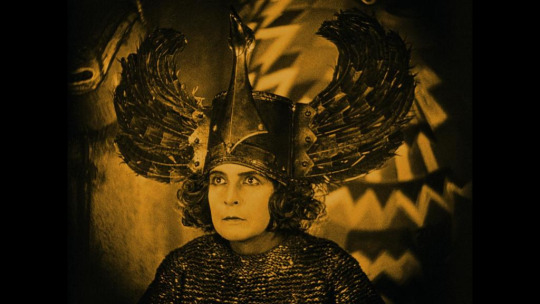
Hanna Ralph in Die Nibelungen: Siegfried
Cast: Gertrud Arnold, Margarete Schön,Hanna Ralph, Paul Richter, Theodor Loos, Hans Adalbert Schlettow Georg John.
Die Nibelungen: Kriemhild's Revenge
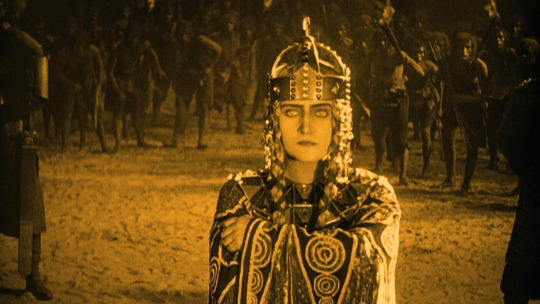
Margarete Schön in Die Nibelungen: Kriemhild's Revenge
Cast: Margarete Schön, Gertrud Arnold, Theodor Loos, Hans Adalbert Schlettow, Rudolf Klein-Rogge, Georg John.
Screenplay: Fritz Lang, Thea von Harbou. Cinematography: Carl Hoffmann, Günter Rittau, Walter Ruttmann. Art direction: Otto Hunte, Karl Vollbrecht. Costume design: Paul Gerd Guderian, Aenne Willkomm. Music: Gottfried Huppertz.
Fritz Lang's two-part epic, based on the Middle High German Nibelungenlied, will confuse anyone who knows the story only via Richard Wagner's Ring cycle: There are no Rhinemaidens or gods or Valkyries, nothing of Siegfried's parentage, and, since it lacks gods, consequently no Götterdämmerung. It consists of two films, Siegfried and Kriemhild's Revenge, that tell the story -- parts of which will be familiar from the final two operas in Wagner's cycle -- of how Siegfried slew the dragon and bathed in its blood, becoming invincible except for one spot on his back that the blood failed to touch, then killed the dwarf Alberich and took possession of a magic net that renders him invisible. He travels to Burgundy, where he wins the hand of the beautiful Kriemhild by helping her brother, King Gunther, subdue the warrior maiden Brunnhild. But Siegfried is killed after Gunther's advisor, Hagen, tricks Kriemhild into revealing his vulnerable spot. Brunnhild kills herself and Kriemhild vows revenge on the whole lot, which in the second film she accomplishes by marrying King Etzel, aka Attila, and provoking war between his Huns and the Burgundians. Lang tells the story with an eye-filling blend of tableaus, set-pieces, and scenes swarming with bloody action, concluding with a spectacular fire in which the Burgundians are trapped in Etzel's castle. The performances are pretty spectacular, too. Paul Richter plays Siegfried as a muscular young goof ensnared by fate, Hanna Ralph is a formidable Brunnhild, and Margarete Schön modulates from naïve to terrifying as Kriemhild. But it's the production design by Otto Hunte and the costuming by Paul Gerd Guderian that lingers most in the memory. The production evokes late 19th- and early 20th-century book illustrators like Arthur Rackham and Walter Crane, but also the stark hieratic figures of Byzantine mosaics, especially Kriemhild, who becomes more powerfully static as the film progresses. Much has been written about the way the film fed into the heroic German myth that was co-opted by the Nazis, especially since the screenwriter, Thea von Harbou, Lang's wife at the time, later joined the party. (Lang, whose mother was Jewish, left Germany in 1934.) In fact, the Nazis sanctioned only the first half, Siegfried, after they came to power. Kriemhild's Revenge, with its depiction of the corruption of power and its nihilistic ending, didn't suit their purposes.
7 notes
·
View notes
Text
Die Nibelungen (Fritz Lang, 1924)
Die Nibelungen: Siegfried
Cast: Gertrud Arnold, Margarete Schön, Hanna Ralph, Paul Richter, Theodor Loos, Hans Adalbert Schlettow, Georg John.
Die Nibelungen: Kriemhild's Revenge
Cast: Margarete Schön, Gertrud Arnold, Theodor Loos, Hans Adalbert Schlettow, Rudolf Klein-Rogge, Georg John.
Screenplay: Fritz Lang, Thea von Harbou. Cinematography: Carl Hoffmann, Günter Rittau, Walter Ruttmann. Art direction: Otto Hunte, Karl Vollbrecht. Costume design: Paul Gerd Guderian, Aenne Willkomm. Music: Gottfried Huppertz
Fritz Lang's two-part epic, based on the Middle High German Nibelungenlied, will confuse anyone who knows the story only via Richard Wagner's Ring cycle: There are no Rhinemaidens or gods or Valkyries, nothing of Siegfried's parentage, and, since it lacks gods, consequently no Götterdämmerung. It consists of two films, Siegfried and Kriemhild's Revenge, that tell the story -- parts of which will be familiar from the final two operas in Wagner's cycle -- of how Siegfried (Paul Richter) slew the dragon and bathed in its blood, becoming invincible except for one spot on his back that the blood failed to touch, then killed the dwarf Alberich (George John) and took possession of a magic net that renders him invisible. He travels to Burgundy, where he wins the hand of the beautiful Kriemhild (Margarete Schön) by helping her brother, King Gunther (Theodor Loos), subdue the warrior maiden Brunnhild (Hanna Ralph). But Siegfried is killed after Gunther's advisor, Hagen (Hans Adalbert Schlettow), tricks Kriemhild into revealing his vulnerable spot. Brunnhild kills herself and Kriemhild vows revenge on the whole lot, which in the second film she accomplishes by marrying King Etzel (Rudolf Klein-Rogge), aka Attila, and provoking war between his Huns and the Burgundians. Lang tells the story with an eye-filling blend of tableaus, set-pieces, and scenes swarming with bloody action, concluding with a spectacular fire in which the Burgundians are trapped in Etzel's castle. The performances are pretty spectacular, too. Richter plays Siegfried as a muscular young goof ensnared by fate, Ralph is a formidable Brunnhild, and Schön modulates from naïve to terrifying as Kriemhild. But it's the production design by Otto Hunte and the costuming by Paul Gerd Guderian that lingers most in the memory. The production evokes late 19th- and early 20th-century book illustrators like Arthur Rackham and Walter Crane, but also the stark hieratic figures of Byzantine mosaics, especially Kriemhild, who becomes more powerfully static as the film progresses. Much has been written about the way the film fed into the heroic German myth that was co-opted by the Nazis, especially since the screenwriter, Thea von Harbou, Lang's wife at the time, later joined the party. (Lang, whose mother was Jewish, left Germany in 1934.) In fact, the Nazis sanctioned only the first half, Siegfried, after they came to power. Kriemhild's Revenge, with its depiction of the corruption of power and its nihilistic ending, didn't suit their purposes.
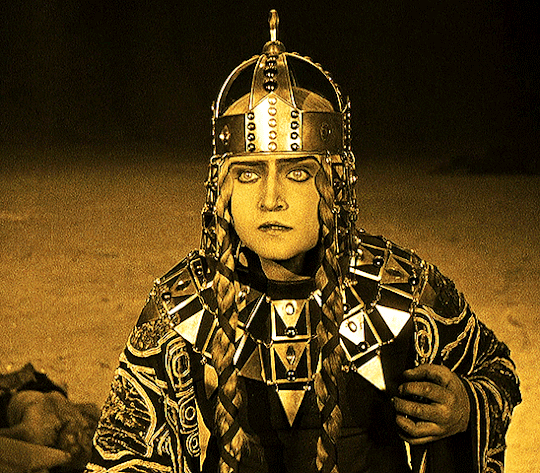
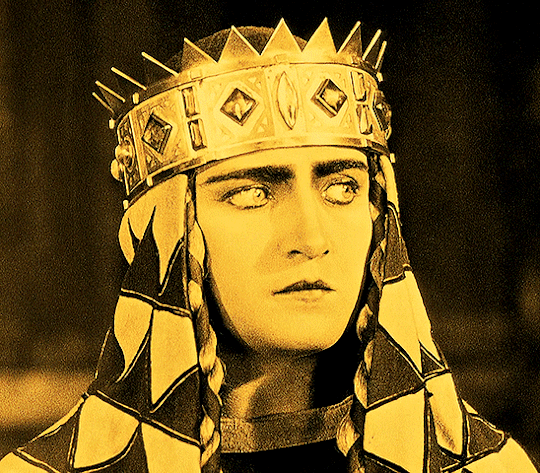

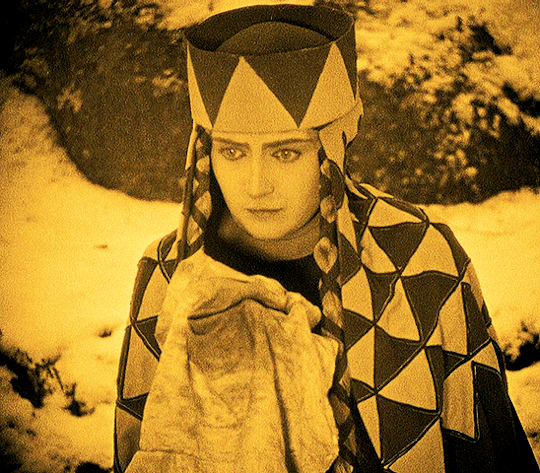
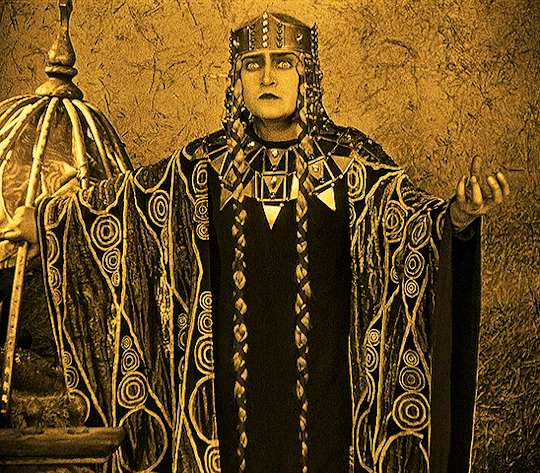
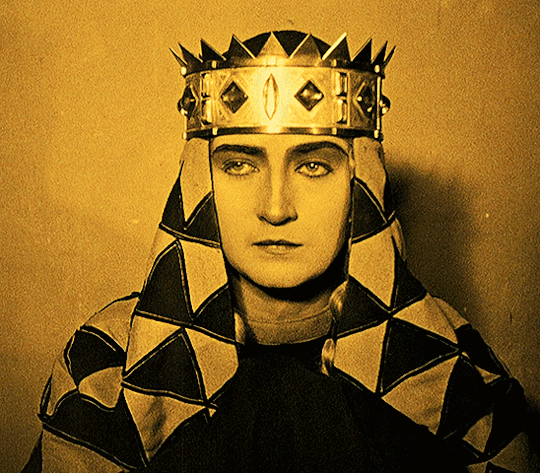
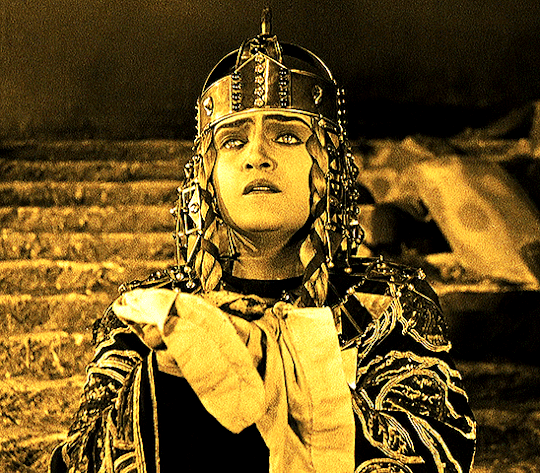

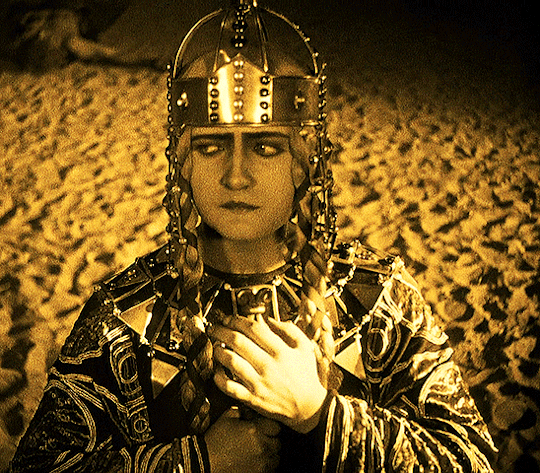
Margarete Schön as Kriemhild of Burgund
DIE NIBELUNGEN: KRIEMHILD'S REVENGE (1924) | dir. Fritz Lang
2K notes
·
View notes
Text
Ardagger - Frühstücksnews - Donnerstag, 2.12.2021
Ardagger – Frühstücksnews – Donnerstag, 2.12.2021
Sehr geehrte Gemeindebürgerin! Sehr geehrter Gemeindebürger! Heute müssen wir leider wieder von einer Gemeindebürgerin Abschied nehmen: Frau Gertrud Richter aus Stephanshart in der Mesnerholzstraße ist gestern nach langer schwerer Krankheit im 92. Lebensjahr von Gott aus diesem Leben abberufen worden. Heute findet um 19.00 Uhr die Nachtwache in der Pfarrkirche Stephanshart statt und morgen (Am…

View On WordPress
#Ardagger Wochenmarkt#Corona#Coronazahlen#Fam. Hauer#Gertrud Richter#Glasfaser als Geschenk#Glasfaseranschluss Ardagger#Maria Hauer#Maria und Bernhard Hauer#Radio Niederösterreich#Thomas Naderer#Weihnachtsgeschenke
0 notes
Photo


#die nibelungen#siegfried#kriemhild's revenge#paul richter#margarete schön#hanna ralph#bernhard goetzke#theodor loos#rudolf klein rogge#rudolf rittner#hans adalbert schlettow#georg august koch#georg john#gertrud arnold#Hans Carl Müller#erwin biswanger#fritz alberti#Annie Röttgen#fritz lang#1924
106 notes
·
View notes
Text
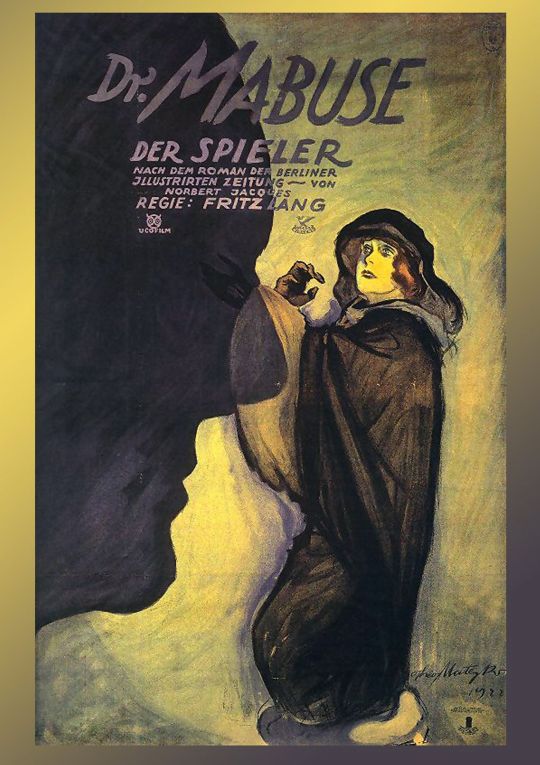
9.9.21
#film#letterboxd#watched#dr. mabuse the gambler#fritz lang#aud egede-nissen#alfred abel#gertrude welcker#paul richter#georg john#grete berger
10 notes
·
View notes
Photo
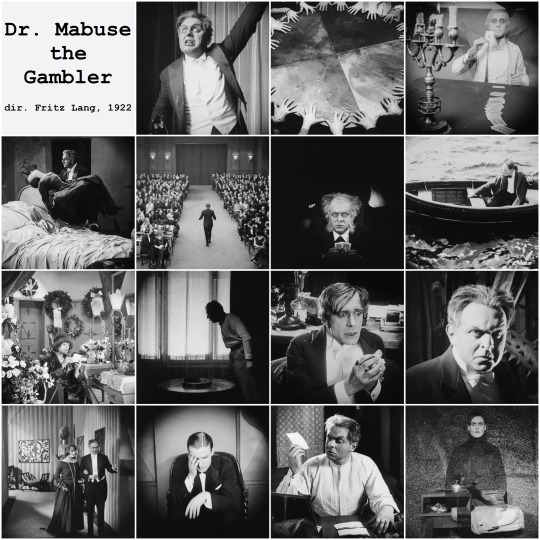
Dr. Mabuse the Gambler
directed by Fritz Lang, 1922
#Dr. Mabuse the Gambler#Dr. Mabuse der Spieler#Fritz Lang#movie mosaics#Rudolf Klein-Rogge#Gertrude Welcker#Bernhard Goetzke#Aud Egede-Nissen#Alfred Abel#Paul Richter
9 notes
·
View notes
Text






Mabuse's Gaze
Rudolf Klein-Rogge in DR. MABUSE, DER SPIELER (1922) | dir. Fritz Lang
#rudolf klein-rogge#paul richter#gertrude welcker#dr. mabuse the gambler#dr. mabuse der spieler (1922)#dr. mabuse#edgar hull#countess dusy told#1920s#fritz lang#classic film#silent film#german cinema#weimar cinema#german expressionism#screencaps#imageedit#my post
6 notes
·
View notes
Text
#dr. mabuse the gambler#film#review#criterion channel#german expressionism#fritz lang#rudolf klein rogge#bernhard goetzke#aud egede nissen#gertrude welcker#alfred abel#paul richter
0 notes
Photo
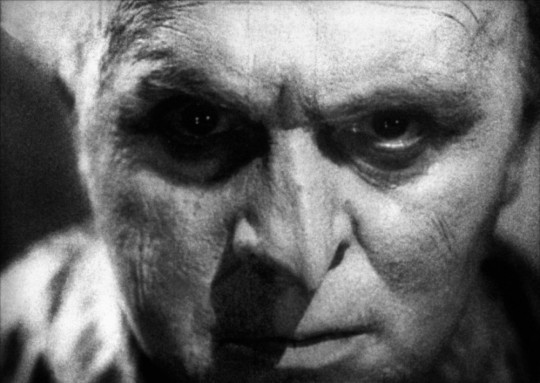
Rudolf Klein-Rogge in Dr. Mabuse the Gambler (Fritz Lang, 1922)
Cast: Rudolf Klein-Rogge, Aud Egede-Nissen, Gertrud Welcker, Alfred Abel, Bernhard Goetzke, Paul Richter, Robert Forster-Larrinaga, Hans Adalbert Schlettow, Georg John, Károly Huszár, Grete Berger, Julius Falkenstein. Screenplay: Thea von Harbou, Fritz Lang, based on a novel by Norbert Jacques. Cinematography: Carl Hoffmann. Art direction: Otto Hunte, Erich Kettelhut, Karl Stahl-Urach, Karl Vollbrecht.
Dr. Mabuse the Gambler is a four-and-a-half-hour movie, and I've seen two-hour movies that felt longer. It zips along because Fritz Lang never fails to give us something to look at and anticipate. There is, first and foremost, the almost literally hypnotic performance of Rudolf Klein-Rogge as Mabuse, a role that could have degenerated into mere villainous mannerisms. There is his dogged and thwarted but always charismatic opponent, von Wenk (Bernhard Goetzke), who seems on occasion to resist Mabuse's power by mere force of cheekbones. There is the extraordinary art decoration provided by Otto Hunte and Erich Kettelhut, which often gives the film its nightmare power: Consider, for example, the exceedingly odd stage decor provided for the Folies-Bergère performance by Cara Carozza (Aud Egede-Nissen), in which she contends with gigantic heads with phallic noses (or perhaps beaks), or the collection of primitive and Expressionist art belonging to the effete Count Told (Alfred Abel). The story itself, adapted from the novel by Norbert Jacques by Lang's wife-to-be Thea von Harbou, is typically melodramatic stuff about a megalomaniac psychiatrist, who uses his powers to become a master criminal. But l think it succeeds not only because it has so much to say about the period in which it was made but also because of our continuing fascination with mind control. It sometimes feels like there's a little Mabuse in everyone who seeks power. Somehow we continually lose our skepticism, born of hard experience, about the manipulators and find ourselves once again yielding to them. And somehow we usually, like von Wenk, find a way to pull ourselves back from the brink. But, as Lang himself experienced, we don't always manage to do so.
3 notes
·
View notes
Text
Bücherverbrennung - Auch in Dortmund verbrannten die Nazis Bücher: Das Beste, Klügste, Humanste, das deutsche Dichter*innen und Wissenschaftler*innen geschaffen hatten, ging 1933 in Flammen auf
Bücherverbrennung – Auch in Dortmund verbrannten die Nazis Bücher: Das Beste, Klügste, Humanste, das deutsche Dichter*innen und Wissenschaftler*innen geschaffen hatten, ging 1933 in Flammen auf

Gedenkplatte auf dem Dortmunder Hansaplatz. Fotos (12): C. Stille
In vielen deutschen Universitätsstädten verbrannten die Nazis im Mai 1933 tausende Bücher aus öffentlichen und privaten Bibliotheken auf öffentlichen Plätzen. Dabei Werke bekannter Autoren wie Erich Kästner, Kurt Tucholsky, Carl von Ossietzky oder Heinrich Mann, darunter viele jüdische Schriftsteller. Am 30. Mai 1933 fand auch in…
View On WordPress
#Andreas Weißert#BdgR#Bernd Rosenburg#Bernd Temming#Bertold Brecht#Charlotte Tmming#David Oriewski#DKP#Doris Borowski#Dortmunder Friedensforum#Erich Kästner#Erich Mühsam#Ernst Toller#Gertrud Kolmar#Hans Tombrock#kurt tucholsky#Oskar Maria Graf#Paul Polte#Tirzah Haase#Ula Richter#vvn -bda dortmund
0 notes
Text
Starkid Charlie and the Chocolate Factory Fancast
(based off the Broadway version)
AJ Holmes as Willy Wonka
Nick Lang as Charlie Bucket
Dylan Saunders as Grandpa Joe
Kim Whalen as Sarah Bucket
Joey Richter as Augustus Gloop
Jamie Burns as Gertrude Gloop
Alle-Faye Monka as Veruca Salt
Robert Manion as Oleg Salt
Tiffany Williams as Violet Beauregard
James Tolbert as Eugene Beauregard
Brant Cox as Mike Teavee
Lauren Lopez as Ethel Teavee
Jaime Lyn Beatty as Cherry Sundae
Jon Matteson as Jerry Jubilee
#Yay I've finally contributed to the Catcf fandom#starkid#charlie and the chocolate factory#Catcf#Catcf musical#Catcf broadway#AJ Holmes#Nick Lang#Dylan Saunders#Kim Whalen#Joey Richter#Jamie Burns#Alle-Faye Monka#Robert Manion#Tiffany Williams#James Tolbert#Brant Cox#Lauren Lopez#Jaime Lyn Beatty#Jon Matteson
48 notes
·
View notes
Text

Wilhelmina Barns-Graham & Anne Carson
Safo fue una música. Su poesía es lírica, es decir, compuesta para ser cantada con el acompañamiento de la lira. Interpela a su lira en uno de sus poemas (fr. 118) y menciona a menudo la música, las canciones y el canto. Los pintores de los antiguos vasos cerámicos la retratan con su instrumento. Los escritores tardíos le atribuyen tres inventos musicales: el del plectro, un instrumento para pulsar la lira (Suda); el de la péctide, un tipo particular de lira (Ateneo, El banquete de los sabios 14.635b); y el del modo mixolidio, un estilo exaltado también presente en los poetas trágicos, que lo aprendieron de Safo (Aristóxeno citado por Plutarco, Sobre la música 16.113c). Toda la música de Safo se ha perdido.
Safo fue también una poeta. Existe una hydria del siglo V a.C. en el Museo Nacional de Atenas que representa a Safo, identificada por su nombre, leyendo un papiro. Se trata de una imagen idealizada: se desconoce si ella en persona fue iletrada o no. Pero parece verosímil que las letras de sus canciones fueran puestas por escrito durante su vida o muy poco después de su muerte y que ya se encontraran sobre rollos de papiro hacia finales del siglo V a.C. En un rollo de papiro el texto está escrito en columnas, sin división de palabras ni puntuación ni alineación. Leer un texto así es dificultoso incluso cuando llega hasta nosotros en su integridad, cosa que no sucede con la mayoría de los papiros. De los nueve libros de poesía lírica que se dice que Safo compuso, ha sobrevivido completo un único poema. Todo lo demás son fragmentos.
Safo vivió en la ciudad de Mitilene en la isla de Lesbos, a partir del 630 a.C. aproximadamente. No se sabe cuándo murió. Su exilio en Sicilia en algún momento entre el 604 y el 595 a.C. se menciona en una inscripción antigua (el Mármol de Paros), pero nada se dice del motivo de ese exilio. Las fuentes biográficas mencionan a una madre, un padre, una hija, un marido y tres hermanos de Safo. Parece haber dedicado su vida a la composición de canciones; los eruditos de Alejandría las compilaron en nueve libros, de los que solamente el primero constaba de 1320 versos. La mayor parte de ello se ha perdido. El rostro de Safo se grabó en monedas acuñadas en Mitilene (véase G.M.A. Richter, Portraits of the Greeks, 1.70-72) y los poetas helenísticos la llamaron «la décima Musa» o «la Musa mortal» (véase Antología Palatina 9.506 y 7.14). El talante general de la opinión del mundo antiguo sobre su obra se resume en un comentario de Estrabón:
Safo [es] una cosa fascinante. Hasta donde sabemos, en toda la historia de la que hay memoria ninguna otra mujer puede apenas acercarse a rivalizar con ella en la gracia de su poesía. (13.2.3)
Las controversias sobre su ética personal y su modo de vida han ocupado el tiempo de muchísimas personas a lo largo de la historia de la erudición sáfica. Safo, al parecer, conoció y amó a mujeres con la misma hondura con la que compuso música. ¿Podemos dejar aquí el asunto? Como dijo Gertrude Stein:
Ella debió ser una mujer muy feliz. Ahora somos capaces de reconocer una fotografía. Somos capaces de conseguir lo que queremos.
Marry Nettie, Gertrude Stein Writings 1903‐1932
(Nueva York, 1999), 461
- Si no, el invierno. Fragmentos de Safo. Anne Carson. Edición trilingüe, traducción del inglés al español a cargo de Aurora Luque. Vaso Roto.
13 notes
·
View notes